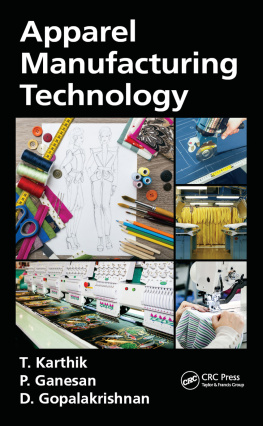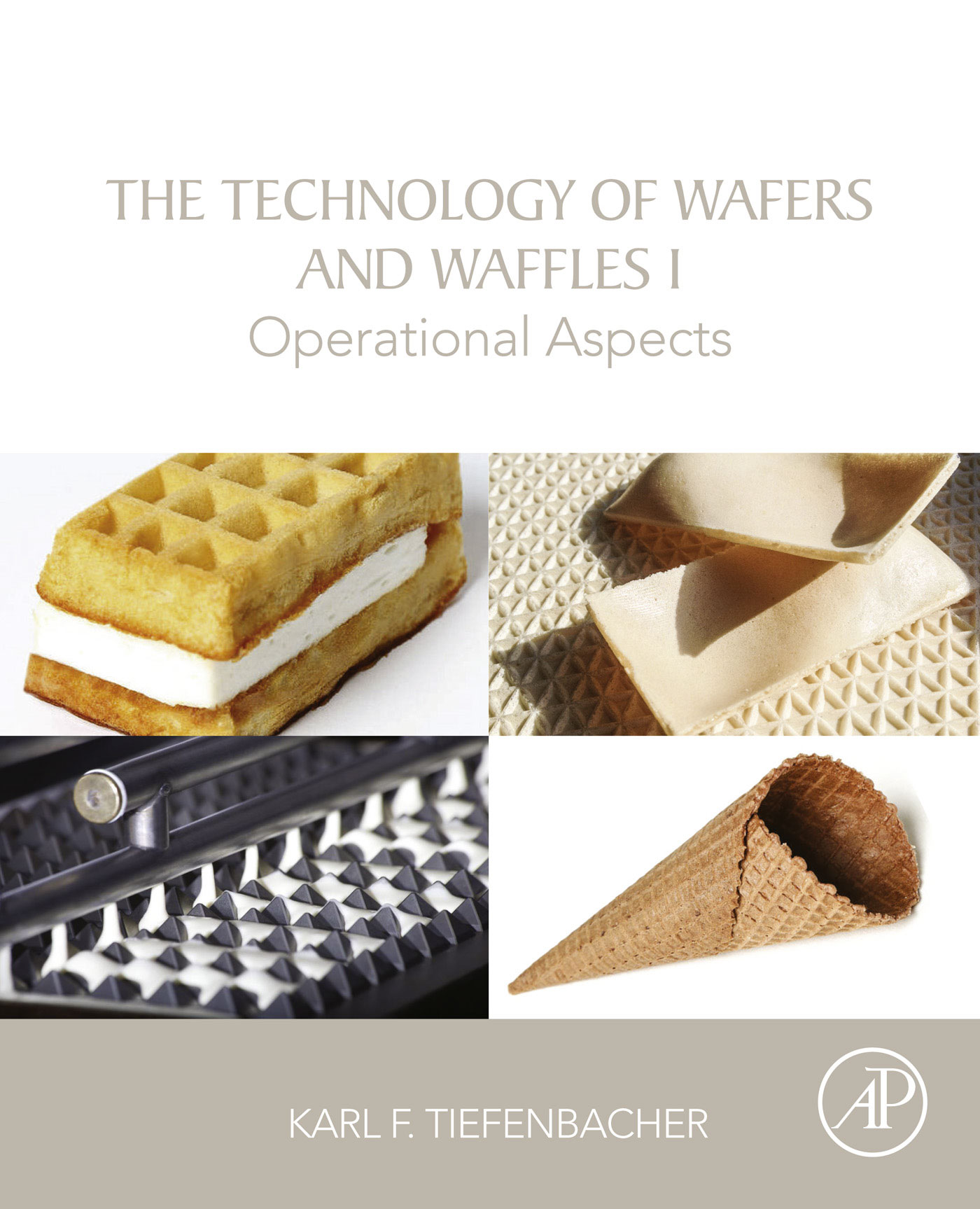The Technology of Wafers and Waffles I
Operational Aspects
First Edition
Karl F. Tiefenbacher

Copyright
Academic Press is an imprint of Elsevier
125 London Wall, London EC2Y 5AS, United Kingdom
525 B Street, Suite 1800, San Diego, CA 92101-4495, United States
50 Hampshire Street, 5th Floor, Cambridge, MA 02139, United States
The Boulevard, Langford Lane, Kidlington, Oxford OX5 1GB, United Kingdom
2017 Elsevier Inc. All rights reserved.
No part of this publication may be reproduced or transmitted in any form or by any means, electronic or mechanical, including photocopying, recording, or any information storage and retrieval system, without permission in writing from the publisher. Details on how to seek permission, further information about the Publishers permissions policies and our arrangements with organizations such as the Copyright Clearance Center and the Copyright Licensing Agency, can be found at our website: www.elsevier.com/permissions.
This book and the individual contributions contained in it are protected under copyright by the Publisher (other than as may be noted herein).
Notices
Knowledge and best practice in this field are constantly changing. As new research and experience broaden our understanding, changes in research methods, professional practices, or medical treatment may become necessary.
Practitioners and researchers must always rely on their own experience and knowledge in evaluating and using any information, methods, compounds, or experiments described herein. In using such information or methods they should be mindful of their own safety and the safety of others, including parties for whom they have a professional responsibility.
To the fullest extent of the law, neither the Publisher nor the authors, contributors, or editors, assume any liability for any injury and/or damage to persons or property as a matter of products liability, negligence or otherwise, or from any use or operation of any methods, products, instructions, or ideas contained in the material herein.
Library of Congress Cataloging-in-Publication Data
A catalog record for this book is available from the Library of Congress
British Library Cataloguing-in-Publication Data
A catalogue record for this book is available from the British Library
ISBN 978-0-12-809438-9
For information on all Academic Press publications visit our website at https://www.elsevier.com/books-and-journals

Publisher: Andre G. Wolff
Acquisition Editor: Nina Rosa Bandeira
Editorial Project Manager: Karen Miller
Production Project Manager: Paul Prasad Chandramohan
Cover Designer: Greg Harris
Typeset by SPi Global, India
Dedication
To Barbara Elisabeth and my family, a permanent source of inspiration.
Franz Haas Jr. (19462006) introduced me to the wafers and waffles subject areas and challenged me to explore them from a food science viewpoint. You will find the results of this introduction in this book. Recipes shall follow in an upcoming book.
Preface
Wafers and waffles have grown to be important segments within the industrially manufactured bakery products category. However, comparatively there is little public knowledge about the technology used to make them. After almost 30 years of working in the area, writing this book is a way to give the knowledge I received from many people during that time. Spreading expertise and ideas can lead to inspiring the development of new products and opportunities.
K.F. Tiefenbacher, Absam, Austria
We owe almost all of our knowledge not to those who have agreed but to those who have differed.
Charles Caleb Colton
Foreword
The Textbook on The Technology of Wafers and Waffles has compiled the most important and recent insights in the field of current wafer and waffle technology from an expert perspective. The author, Prof. Dr. Karl Tiefenbacher, is an internationally recognized and highly renowned industry specialist. As a long-time member of our team, he headed the Research and Application Development department, which he established and managed for 25 years with vision and comprehensive expertise.
Our research in the wafer and waffle field plays a highly central role and forms the basis for innovative product development and the resulting successful production. Haas combines decades of expertise in systems engineering with the highest standards of quality. The impact of new product trends, for example, must be defined, interpreted and implemented to design suitable and efficient production systems. Only a perfect technical interaction of raw materials, processes and machines can guarantee consistent and reliable product quality.
Based on his many years of work and comprehensive expertise, Karl Tiefenbacher presents these and other principles for the readers in his book in a previously unmatched way.
J. Haas; J. Haas; S. Jiraschek, Leobendorf, Austria
Chapter One
Introduction
Abstract
The chapter provides definitions for wafers and waffles and a description of the various products in the market. Some historical information discussed the origin of contemporary wafers and waffles.
Keywords
Definition; History; Terminology; Wafer; Waffle
1.1 Terminology and Definitions in Wafers and Waffles
1.1.1 Wafers
1.1.1.1 Two Meanings
The word wafer in food technology has two meanings
(1) Light, thin and crisp food items baked from batters.
(2) Thin, crisp cookies (biscuits)a term primarily used in the United States.
Within the book we exclusively talk about the first mentioned wafersthe light, thin and crisp food items baked from batters.
1.1.1.2 The Characteristics of Wafers
Most wafers bake in hot metal moulds and are available in sheets, hollow figures, wafer cones or with different intricate shapes. Flute wafers (wafer sticks) bake on hot metal drums. Characteristic features are the following:
a. Wafers are very thin biscuits with an overall thickness of about 2.5 mm (range from less than 1 to 5 mm) and they quite frequently have the typical narrowly spaced wafer pattern on both sides. Wafer paper is a similar product baked in sheets of less than 1 mm thickness without any pattern.
b. Wafers show precisely formed, smooth surfaces. These have details such as reedings or logos grooved into the baking moulds.
c. Wafers are of a delicate, crisp and light texture. The specific gravity of flat and hollow wafers is 0.2 g/cm3 or less. In the cross section you see a highly aerated matrix, primarily composed of gelatinized starch.
d. The crispness of wafers is a result of the low residual moisture after baking, typically in the range of 1%2%. The starch-protein matrix is in the glassy state. Wafers are quite hygroscopic and require high moisture barrier packaging. The crisp texture is lost at about 6%7% moisture content.











